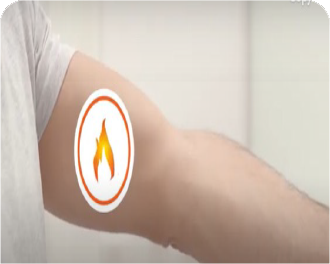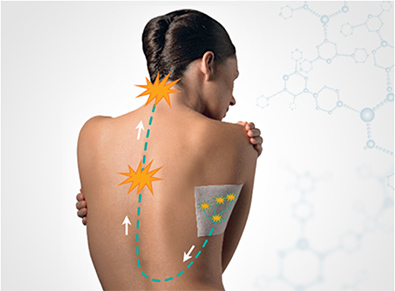UNDERSTANDING YOUR PAIN
Nerves are found all over the body. They are responsible for sending signals to your brain so that you can detect different sensations like touch, pressure, temperature and pain.

What causes nerve pain?
A nerve can become damaged through injury or disease. When a nerve becomes damaged, the affected nerve can misfire and shoot pain signals to the brain. This is commonly known as nerve pain (also known as neuropathic pain or neuralgia).

What does nerve pain feel like?
Nerve pain is often an intense pain. It is commonly described as shooting, stabbing, burning, electric shock-like, pins and needles, tingling or numbness along the path of the nerve. The affected area often becomes sensitive and unintended contact such as touch of clothing or wearing a seatbelt can be painful. It is usually localised, meaning it usually affects a smaller area.

What is localised nerve pain?
Nerve pain may affect a large part of the body, but can be confined to a smaller area on the body
close to the skin's surface. This is known as localised nerve pain. Localised nerve pain usually has the
following features:
- The affected area is usually no bigger than the size of an A4 piece of paper
- The pain is described as 'shooting', 'stabbing', or 'burning' pain
- The location of the pain is often easy to describe by simply pointing to and/or drawing a line around the affected area
The area where the pain is located is often sensitive to touch and sufferers may find even the slightest touch such as a brush of clothing or wearing a seatbelt to be painful.

What is post shingles nerve pain?
Post-shingles nerve pain, also known as post-herpetic neuralgia (PHN), is an ongoing nerve pain that may
last for many months or years in some people who have had shingles. It commonly appears as localised nerve
pain.
People with PHN often describe their symptoms as an intense burning or stabbing pain that may
feel as if it's shooting or radiating along the path of the nerve in the skin.The affected area may be
sensitive to touch, heat or cold.
Other symptoms of post-herpetic neuralgia
As well as burning, stabbing, shooting pain, the affected area may also:
- Feel intensely itchy
- Be more sensitive to pain than usual
- Feel painful as a result of something that would not normally hurt, like a light touch or cool breeze
